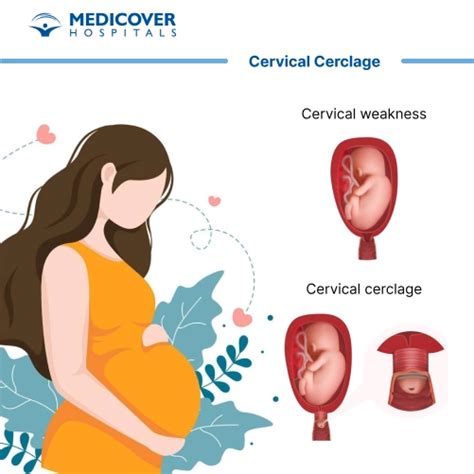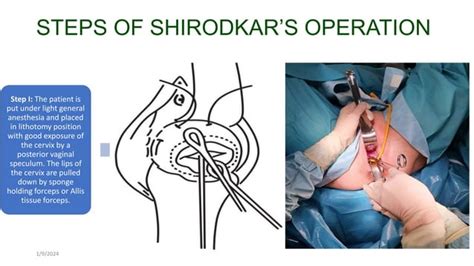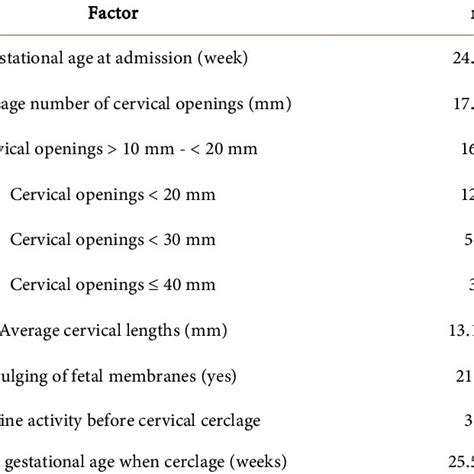Intro
Cervical Cerclage Procedure: Learn about cervical stitch, cerclage surgery, and pregnancy complications, including preterm labor and cervical insufficiency, to understand this lifesaving treatment.
The cervical cerclage procedure is a highly effective and commonly performed surgical intervention designed to prevent preterm birth in pregnant women. This procedure involves the placement of a stitch or suture around the cervix to provide additional support and prevent it from opening too early. Women who have a history of preterm labor, cervical insufficiency, or other complications during pregnancy may benefit from this procedure. The importance of the cervical cerclage procedure lies in its ability to reduce the risk of preterm birth, which is a leading cause of infant mortality and morbidity worldwide.
Preterm birth is a complex issue that affects millions of women and families globally. According to the World Health Organization (WHO), preterm birth is the leading cause of death in children under the age of five, accounting for approximately 1 million deaths annually. In the United States alone, preterm birth affects approximately 1 in 10 births, resulting in significant healthcare costs and long-term consequences for affected children. The cervical cerclage procedure has emerged as a vital tool in the prevention of preterm birth, offering hope to women who are at risk of experiencing this complication.
The decision to undergo a cervical cerclage procedure is typically made after a thorough evaluation of a woman's medical history, pregnancy complications, and cervical health. Women who have a history of preterm labor, cervical insufficiency, or other complications during pregnancy may be candidates for this procedure. Additionally, women who have undergone a previous cervical cerclage procedure or have a family history of preterm birth may also benefit from this intervention. As the medical community continues to advance its understanding of preterm birth and cervical insufficiency, the importance of the cervical cerclage procedure in preventing preterm birth is becoming increasingly recognized.
Cervical Cerclage Procedure Overview

The cervical cerclage procedure is typically performed between 12 and 16 weeks of gestation, although it may be performed earlier or later in some cases. The procedure involves the placement of a stitch or suture around the cervix, which provides additional support and prevents it from opening too early. There are several types of cervical cerclage procedures, including the McDonald cerclage, Shirodkar cerclage, and abdominal cerclage. Each type of procedure has its own advantages and disadvantages, and the choice of procedure depends on individual factors, such as the woman's medical history and cervical health.
Types of Cervical Cerclage Procedures
The McDonald cerclage is the most common type of cervical cerclage procedure, involving the placement of a stitch or suture around the cervix using a specialized needle. This procedure is typically performed under local anesthesia and can be completed in approximately 30 minutes. The Shirodkar cerclage, on the other hand, involves the dissection of the cervix and the placement of a stitch or suture around the cervical tissue. This procedure is typically performed under general anesthesia and may require a longer recovery time.Cervical Cerclage Procedure Benefits

The cervical cerclage procedure offers several benefits to women who are at risk of preterm birth. Some of the most significant benefits include:
- Reduced risk of preterm birth: The cervical cerclage procedure has been shown to reduce the risk of preterm birth in women who have a history of preterm labor or cervical insufficiency.
- Improved fetal outcomes: By preventing preterm birth, the cervical cerclage procedure can improve fetal outcomes, including birth weight and gestational age.
- Reduced risk of infant mortality: The cervical cerclage procedure can reduce the risk of infant mortality by preventing preterm birth and promoting a healthy gestational age.
- Improved maternal outcomes: The cervical cerclage procedure can also improve maternal outcomes, including reduced risk of pregnancy complications and improved overall health.
Cervical Cerclage Procedure Risks and Complications
While the cervical cerclage procedure is generally considered safe, there are some risks and complications associated with the procedure. Some of the most common risks and complications include: * Infection: As with any surgical procedure, there is a risk of infection associated with the cervical cerclage procedure. * Bleeding: There is also a risk of bleeding associated with the procedure, which can be managed with medication or additional surgery. * Cervical scarring: The cervical cerclage procedure can cause scarring on the cervix, which can increase the risk of complications during future pregnancies. * Preterm labor: In some cases, the cervical cerclage procedure can stimulate preterm labor, which can be managed with medication or additional interventions.Cervical Cerclage Procedure Recovery

The recovery time for the cervical cerclage procedure varies depending on individual factors, such as the type of procedure performed and the woman's overall health. In general, women can expect to rest for several days after the procedure and avoid heavy lifting, bending, or strenuous activities. Additionally, women may be advised to avoid sexual intercourse or heavy exercise for several weeks after the procedure to promote healing and prevent complications.
Cervical Cerclage Procedure Follow-Up Care
Follow-up care is an essential aspect of the cervical cerclage procedure, ensuring that women receive the necessary support and monitoring to promote a healthy pregnancy. Women who undergo the cervical cerclage procedure can expect to receive regular prenatal care, including ultrasound examinations and fetal monitoring. Additionally, women may be advised to attend follow-up appointments with their healthcare provider to monitor the cervix and prevent complications.Cervical Cerclage Procedure Cost and Insurance

The cost of the cervical cerclage procedure varies depending on individual factors, such as the type of procedure performed, the healthcare provider, and the location. In general, the cost of the procedure can range from $1,000 to $5,000 or more, depending on the complexity of the procedure and the woman's insurance coverage. Many insurance providers cover the cost of the cervical cerclage procedure, although coverage may vary depending on individual policies and circumstances.
Cervical Cerclage Procedure Alternatives
While the cervical cerclage procedure is a highly effective intervention for preventing preterm birth, there are alternative options available for women who are at risk of this complication. Some alternative options include: * Progesterone therapy: Progesterone therapy involves the administration of progesterone supplements to promote a healthy pregnancy and prevent preterm birth. * Cervical pessary: A cervical pessary is a device that is inserted into the cervix to provide additional support and prevent preterm birth. * Bed rest: In some cases, bed rest may be recommended to promote a healthy pregnancy and prevent preterm birth.Cervical Cerclage Procedure Success Rates

The success rates of the cervical cerclage procedure vary depending on individual factors, such as the type of procedure performed and the woman's overall health. In general, the success rates of the procedure are high, with studies indicating that the procedure can reduce the risk of preterm birth by up to 50%. Additionally, the procedure has been shown to improve fetal outcomes, including birth weight and gestational age.
Cervical Cerclage Procedure Conclusion
The cervical cerclage procedure is a highly effective intervention for preventing preterm birth in women who are at risk of this complication. While the procedure is generally considered safe, there are some risks and complications associated with it. Women who are considering the cervical cerclage procedure should discuss their individual circumstances with their healthcare provider to determine the best course of treatment.What is the cervical cerclage procedure?
+The cervical cerclage procedure is a surgical intervention that involves the placement of a stitch or suture around the cervix to provide additional support and prevent preterm birth.
Who is a candidate for the cervical cerclage procedure?
+Women who have a history of preterm labor, cervical insufficiency, or other complications during pregnancy may be candidates for the cervical cerclage procedure.
What are the benefits of the cervical cerclage procedure?
+The cervical cerclage procedure offers several benefits, including reduced risk of preterm birth, improved fetal outcomes, and improved maternal outcomes.
What are the risks and complications associated with the cervical cerclage procedure?
+While the cervical cerclage procedure is generally considered safe, there are some risks and complications associated with it, including infection, bleeding, and cervical scarring.
How long does it take to recover from the cervical cerclage procedure?
+The recovery time for the cervical cerclage procedure varies depending on individual factors, such as the type of procedure performed and the woman's overall health.
As we conclude our discussion on the cervical cerclage procedure, we invite you to share your thoughts and experiences with this intervention. If you have undergone the cervical cerclage procedure or are considering it, we encourage you to comment below and share your story. Additionally, we invite you to share this article with others who may benefit from this information, and to explore our website for more resources and information on women's health and pregnancy. By working together, we can promote a healthier and more informed community, and support women in making informed decisions about their reproductive health.
